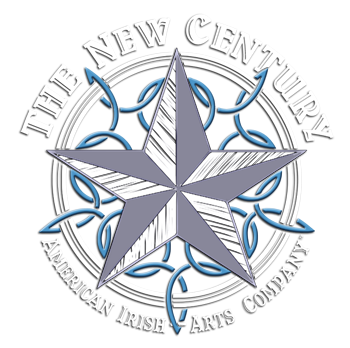What's in a name?
Letters of the alphabet! Four of them, to be precise! [ed. Five?] This riddle has stumped great minds in the fields of science, sports, and mathemagics for nearly two thousand years, yet we solved it in moments by issuing forth from our minds the unstoppable, cosmic force known as IRISH-ARTS POWER!!! (TM)
Remember, kids: just say no to riddles. And when that doesn't work, strap on the uilleann pipes and give 'em a jigs-and-reels uppercut right to the ears!
But sometimes, a name comes along with so many letters in it that even IRISH-ARTS POWER (TM) isn't enough to keep riddles from getting their quizzical paws all over you and your stuff! That's when you need ANSWERS (TM).
Say your fabulous young performing-arts company decides to call itself "The Blue Century Armenian Fire-ish Arts Bumpany". Boy, that's a mouthful... of riddles! What does it mean?
I have no idea. Fire their publicist.
But maybe if they called it THE NEW CENTURY AMERICAN IRISH-ARTS COMPANY, we would be able to detect a method to their madness. Sure it's a tad sentencey, but it used to be that a name told you what was in the box! For instance, that's how corn came to be called corn. If they'd called it "Sunrise Mist", you'd be like, "What in the what?! No thanks!" But they didn't, thank goodness! And we didn't call our company "Sunrise Mist" either (thank goodness). Instead, we named it after this hornpipe, The New Century.
All you have to do is slap "American Irish Arts Company" on the end of that and VOILA: that's how the New Century American Irish-Arts Company got its name! But, you may ask, why call it the New Century American Irish-Arts Company instead of a tested, proven-effective name like Steve or Abraham Lincoln? I grant you those would have been excellent names, but we had something else in mind:
Dear readers, imagine if you will a distant past in which men battled the forces of corruption, tyranny, world serpents, and especially RIDDLES using only the mystic secrets of the IRISH ARTS! Imbued with supernatural beauty and mystic knowledge about how to enjoy life, these IRISH ARTS sustained generation after generation of musicians, poets, bards, and scribes, gifting upon them creativity, endurance, skepticism, and courage.
But then, history posed to Ireland some of its greatest-ever riddles. Snarling through their mustaches they descended on the place, barking out questions like, "What will you eat if we destroy your precious potatoes?" and "Where will you live if we take away your homes?" and "Who will you be if we take you away from Ireland?"
Even the brave IRISH-ARTSmen, bolstered as they were by IRISH-ARTS POWER (TM), were outmatched by this gamut of fearsome, potato-pulverizing riddles, angrily posed. They were dispersed across the globe, clutching to their breasts the fractured shards of IRISH ARTS that would soothe and sustain them during their tempestuous passages into the unknown.
How they ended up in America remains a mystery! [ed. Boats.] But one thing is for certain, loyal readers: when they got here, the IRISH ARTS were with them. And in North America, they flourished, and they shared the IRISH ARTS with people from other lands, whose own native music and art had been riddled by riddles for far too long! And these German, and Italian, and Chinese people took up the IRISH ARTS and beat back their own riddles with music on the melodeon, and uilleann pipes, and fiddle until those riddles swam home to their mommies through a sea of their own tears and utter failure.
And then they beat their chests and screamed at the top of their lungs, "Take that, riddles! Take that, tyranny! Take that, oppression!" And everyone cheered, and went to the bar. And that's how it all began!
So we called our company The New Century American Irish-Arts Company because in the 21st century (which is now), the Irish traditions of music and dance connect people from many cultures. Here in the United States, people from all sorts of cultural backgrounds have learned to play and dance well, and have become integral parts of our national Irish-arts community. This is the community the New Century represents because these are the people who have been called to the stewardship of Irish traditional music in 21st-century America (which is now, here).
In the new millenium, Irish traditions and their cousins in Appalachian, Cape Breton, Acadian, and Old-Time styles are crucial to forming our cultural landscape: furthering cultural heritage, vitalizing music education, and extending the bonds of fellowship around the world through music, dance, art, and friendship—and a healthy distrust of riddles.


